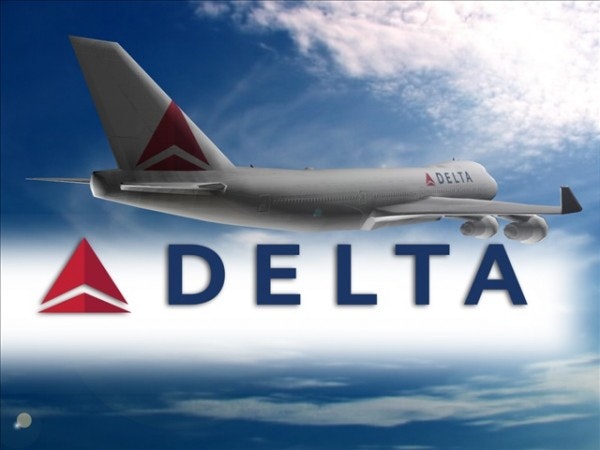Ken Heebner is the co-founder of Capital Growth Management, a money management firm with more than $6 billion under management. The hedge fund is growth-oriented and was founded by Heebner in 1990. Capital Growth, on an average, has a 17.2% return as against the 12.8% return of the index, and of late the fund has been been making bets on airlines.
Capital Growth’s new picks

A couple of Capital Growth’s new picks includes those from the airline industry, Delta Air Lines, Inc. (NYSE:DAL) and United Continental Holdings Inc (NYSE:UAL). Delta is now Capital Growth’s ninth largest holding, and United Continental is the 19th (see Jim Cramer’s thoughts on airlines). The recent consolidation of the industry, with the merger of U.S. Airways and American, leaves three major airlines, which should bode well for the remaining operators. In particular, the consolidation should lead to pricingpower and higher revenue per seat.
Delta has managed to see impressive operating efficiencies, and expects margin expansion of 2.5% to 4.5% for the March-ending quarter. Delta has been performing well across the board, with luggage misses falling 25% and customer complaints down 40% last quarter on a year over year basis. As far as longer-term growth is concerned, one of Delta Air Lines, Inc. (NYSE:DAL)’s key moves has been the acquisition of a 49% stake in the British carrier Virgin Atlantic.
The big “win” for Delta, related to the acquisition, includes the fact that Delta Air Lines, Inc. (NYSE:DAL) will now have greater access to the New York to London route. London’s Heathrow airport is one of the busiest in the world, and Delta only has 0.3% of the slots at the airport, but Virgin has 3.3%.
United Continental Holdings Inc (NYSE:UAL) was another one of Capital Growth’s airline picks. United has some of the top unit revenue growth, and has been focusing on improving its products and in-flight features to help with differentiation. This includes having already installed economy plus seats on 91% of its fleet, and embarking on new initiatives that include expanding its global routes. The airline plans to add international destinations that include Taiwan, Ireland, Paris, and various Canadian locations, not to mention the first ever nonstop Denver to Tokyo service.
Both Delta Air Lines, Inc. (NYSE:DAL) and United Continental Holdings Inc (NYSE:UAL) are also the cheapest airlines in the industry:
Price to earnings (forward estimates)
Delta 5 times
United Continental 6 times
Southwest Airlines 10 times
Jetblue 10 times
Alaska Air 10 times
Weyerhaeuser Company (NYSE:WY) was also another new position, with Capital Growth buying 2.6 million shares, and putting the timber REIT as its 22nd largest holding (read about the timber outlook). Weyerhaeuser is a somewhat diversified REIT, deriving 43% of revenue from wood products (lumber, plywood, etc.), 26% from fibers (pulp), 15% from timberlands (land), and 15% from real estate (housing and residential development).
The timber REIT has an impressive asset base, and driving future performance should be a turnaround in the U.S. housing market, and a greater demand for timber exports. Related to the U.S turnaround, S&P expects residential construction to recover nicely in 2013, with housing starts expected to be up 27%.
Capital Growth’s selloffs
As far as bearish signs are concerned, Capital Growth sold off shares of two major car makers, Ford Motor Company (NYSE:F) and General Motors Company (NYSE:GM). The firm sold off all of its GM shares, and downsized its Ford shares by 32%. I don’t necessarily agree with Capital Growth’s sell offs, and believe there are reasons to buy both stocks.
For one, Ford expects industry volume of 15 million to 16 million unit sales in the U.S. for 2013, compared to 14.8 million in 2012. The car company is also expecting gains in market share for its U.S. and China operations. Its market share is 15% in the U.S. and only 3% in China. Besides growth in China, Ford plans to focus on the highly populous country of India, by boosting exports of its engine production and manufacturing in India, and then embarking on plans to ship from India to Europe. Ford also pays a near 3% dividend yield that is sometimes overlooked (read about Ford’s great dividend).
GM is another top car maker. The company has some $26 billion in cash, with total debt of only $16 billion. North American market share is just one of GM’s focuses, but the company does plan to boost market share and increase prices in the region over the next few years. This includes upping its profit margins from 8% to 10% for the region over the next three years. The margin expansion is expected to be a result of its investments in Cadillac, which it hopes to bring to the forefront as a premier brand.
With Ford’s plans to look to China and India for growth, GM is following suit. GM has a joint venture with SAIC for opening its second plant in the Guangxi province for manufacturing the only-in-China brand Baojun, which will be able to produce some 400,000 vehicles annually. GM also has a joint venture with SAIC, of which it owns 93%, that will launch several light commercial vehicles in the Indian car market. GM’s India operations will also export vehicles to other markets, including South America and South East Asia (see how the car makers are doing in China so far).
As far as GM and Ford go, both still trade much cheaper than their overseas counterparts:
Price to Earnings
Ford 9 times
GM
9.5 times
Toyota 19 times
Honda 17 times
Don’t be fooled
The article Shakeups From This Growth Hedge Fund originally appeared on Fool.com and is written by Marshall Hargrave.
Copyright © 1995 – 2013 The Motley Fool, LLC. All rights reserved. The Motley Fool has a disclosure policy.

